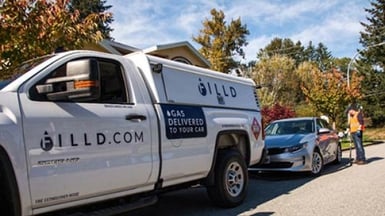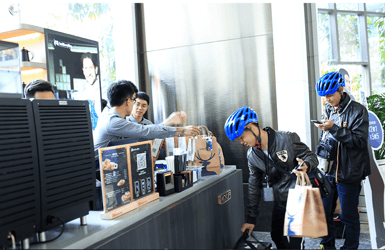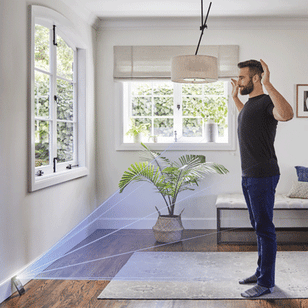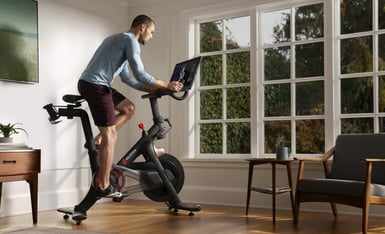8 inspiring ideas of how regulated industries can use customer centricity to transform their digital experience
Written by Tracey Greer
Reflecting on the recent Episerver Ascend conference in London, one of the stand-out sessions for me was the talk from Cate Trotter, Head of Trends from Insider Trends.
Cate opened with two statistics which definitely struck a chord with our raison d’etre at Mando:
“Client-centric companies are 60% more profitable”
Source: Deloitte, 2016
“Digital leaders have a profit margin that is 57% higher”
Source: Harvard Business Review, 2017
Cate went on to describe her less than satisfactory omnichannel experience with Etisalat, a mobile phone operator in Dubai. Whilst they offered multi-channel customer support across live chat, a mobile app, call centre, instore human agent and in-store self-serve kiosk, none of these channels were integrated - resulting in a very frustrating and disappointingly fragmented experience.
She observed how many companies tend to sit either very much inside their customer experience, knowing exactly how their actions impact satisfaction, or very far removed from it.


However, the worst possible approach to customer experience is to be in the middle, setting unrealistic expectations with the customer which are never delivered upon. In the case of Etisalat, they were mature enough to appreciate the importance of multiple customer channels, however this was not integrated or well thought-through – the multiple user journeys that will be taken have not been properly considered. It wouldn’t be a surprise if none of the Etisalat staff team had been on the receiving end of their own customer experience.
Cate shared some powerful examples of companies that are disrupting industries, by focusing on customer centricity as a competitive advantage. Some of the most powerful included:
Filld: New an app-based service that delivers fuel to your car, giving the customer time back in your day, taking one more thing off the to-do list. This service is one of a growing number trending towards delivering products to right where the customer is, anytime of the day.

Luckin Coffee: Similar to Filld, Luckin Coffee, a Chinese coffee shop brand, delivers coffee directly to the customer. They now have as many Chinese locations as Starbucks, and have pledged to open an average of 9 stores per day for the last year.

Nested: Turning the traditional property buying and selling process on its head. Most of the time, property buying delays are due to the chain, so Nested effectively ‘bank-rolls’ sellers by granting them an advance to purchase a new property before completing on their existing home. They’re supported in the back end by a complex engine which calculates the property’s value based on surrounding sale prices. They claim to give sellers 98.5% of the original value of their property, approximately 5% better than a traditional estate agent.
Project Sunroof: Using the technology behind Google Earth to deliver solar savings to homeowners. They analyse the homes roof shape and local weather patterns to create a personalised solar plan, which then calculates the electricity savings. Customers can compare loan, lease, and purchase options for solar panels based on the results. This simplifies what could be a lengthy process, saving the customer time and representing a one-stop-shop approach.
M Tailor: Another great example of simplifying a complex process and opening up a service to the mass market. The MTailor app uses a smartphone and machine learning algorithms to measure 17 different points for clothes, in under 30 seconds. Customers can then use these measurements to personalise clothing choices like fabric, collar style, stitching etc. This app claims to measure the human body 20% more accurately than a traditional tailor.

Peloton: We’re probably more familiar with this product, a studio cycling class that can be accessed from your home. This engaging boutique fitness concept that can be accessed any time from anywhere. It adds a social element as riders are in a virtual class with thousands of others across the globe. Just as they do with the user information available for each class, like heart rate, resistance, cadence and output, Peloton also make powerful use of personalised content, and user interaction.

Eva: Using technology within healthcare, Eva combines great user experience, artificial intelligence and technology to save lives. It’s a tech-embedded bra worn once a week, which detects the thermal patterns of the body, a possible pointer of breast cancer.
MM LaFleur: the personalised shopping experience. MM LaFleur create a profile based on the customers’ likes and clothing preferences. Clients then visit one of their showrooms, where a stylist will have tailored clothing selections waiting for the customer, all welcomed with champagne.
All of these examples focus around one of the key take homes from the session - determine who the customer of the future is, and then develop solutions that make it easier for them? Whether in healthcare, retail, fitness – or regulated industries like utilities and financial services - do not just focus on the technology but consider all aspects of the best “blue sky” customer experience and then use technology to deliver this.
What else is going on
-
March 2024
Ghost Spam in GA4 – How to Spot and Deal With It
How to spot and deal with ghost spam in Google Analytics 4 (GA4) to safeguard your data insights. Implement proactive measures to maintain data accuracy.
-
November 2023
Mando to bridge skills gap at BIMA Digital Day
The BIMA Digital Day on November 8th is an attempt to bridge this skills gap, as eight of Mando's experts will spend time with around 240 Year 10 students from The Studio School at their Liverpool campus.
